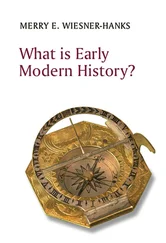R. Nisbet Bain - The Cambridge Modern History
Здесь есть возможность читать онлайн «R. Nisbet Bain - The Cambridge Modern History» — ознакомительный отрывок электронной книги совершенно бесплатно, а после прочтения отрывка купить полную версию. В некоторых случаях можно слушать аудио, скачать через торрент в формате fb2 и присутствует краткое содержание. Жанр: unrecognised, на английском языке. Описание произведения, (предисловие) а так же отзывы посетителей доступны на портале библиотеки ЛибКат.
- Название:The Cambridge Modern History
- Автор:
- Жанр:
- Год:неизвестен
- ISBN:нет данных
- Рейтинг книги:4 / 5. Голосов: 1
-
Избранное:Добавить в избранное
- Отзывы:
-
Ваша оценка:
- 80
- 1
- 2
- 3
- 4
- 5
The Cambridge Modern History: краткое содержание, описание и аннотация
Предлагаем к чтению аннотацию, описание, краткое содержание или предисловие (зависит от того, что написал сам автор книги «The Cambridge Modern History»). Если вы не нашли необходимую информацию о книге — напишите в комментариях, мы постараемся отыскать её.
The first series was planned by Lord Acton and edited by him with Stanley Leathes, Adolphus Ward and George Prothero.
The Cambridge Modern History Collection features all five original volumes:
Volume I: The Renaissance
Volume II: The Reformation, the End of the Middle Ages
Volume III The Wars of Religion
Volume IV: The 30 Years' War
Volume V: The Age of Louis XIV
The Cambridge Modern History — читать онлайн ознакомительный отрывок
Ниже представлен текст книги, разбитый по страницам. Система сохранения места последней прочитанной страницы, позволяет с удобством читать онлайн бесплатно книгу «The Cambridge Modern History», без необходимости каждый раз заново искать на чём Вы остановились. Поставьте закладку, и сможете в любой момент перейти на страницу, на которой закончили чтение.
Интервал:
Закладка:
The Signoria for May and June, 1497, contained a majority of Arrab-biati; and Savonarola’s position became critical. Under pretext of the plague, it forbade preaching in the Cathedral after Ascension day. The Compagnacci were gaining courage; they openly wagered that Savonarola should not preach the Ascension sermon. In the night they befouled the cathedral pulpit. Savonarola, undeterred, began to preach, when one of his enemies dashed a heavy alms-box to the ground. Amid cries of “Jesu, Jesu!” the terrified congregation rushed to the doors, while the Compagnacci shouted and hammered on the desks. The brawlers, including two members of the Eight, the very Ministry of Justice, made for the preacher, but were beaten off. At length the Piagnoni, returning with arms, escorted Savonarola to San Marco; but the convent was now from time to time surrounded by a howling mob. The Piagnoni and Arrabbiati boys stoned each other in the streets, and even an ex-Gonfalonier forgot his dignity, and became again a boy and stone-thrower. The Gonfalonier took advantage of the scandal to propose the Friar’s dismissal as the only means of healing these passionate dissensions. The proposal was lost by a single vote; for five of the Signoria were for, and four against, and a majority of two-thirds was requisite. The government had a heavy responsibility to face; there was no police force which could control the Compagnacci; unless Savonarola could be silenced, civil war seemed certain.
Silence was soon imposed, not, indeed, from Florence but from Rome. In June arrived the brief of excommunication, which Savonarola at first obeyed. Other circumstances contributed to lull the popular excitement. The plague was raging; all who had the means left the city, and the younger Dominicans were sent to the hill convents. Either the violence of the Compagnacci or resentment at papal interference turned the tide of feeling. The Signorle until the close of 1497 were favourable to Savonarola, while public attention was diverted to an incident in which he had no direct part. Piero’s attempt on Florence had been a farce, but its sequel was a tragedy. In August a disappointed Medicean agent, Lamberto della Antella, disclosed the details of the plot. Several leading citizens were arrested and others fled. It was proved that Bernardo del Nero, though Gonfalonier, was privy to the plot, together with at least two members of his Signorla, one of whom, Battista Serristori, was, curiously enough, a pronounced Savonarolist. The issue finally narrowed itself to the fate of five citizens, whose position well illustrates the composition of the Bigi. Bernardo had not, perhaps, favoured the conspiracy; he would have preferred an oligarchy with the younger line of Medici at its head; but he had information of the plot and would not betray his close associates. The soul of the attempt was Lorenzo Tornabuoni, a young man of thirty-two, the darling of Florentine society. Closely related to the Medici, he was well-nigh ruined by the revolution, but above all feared the apparently inevitable oligarchy; for he had been chief among the dandies who had been the personal rivals of Piero de’ Medici’s cousins. Of the others Niccolo Ridolfi was father-in-law to Piero’s sister, and hoped for high position under a Restoration: Giannozzo Pucci belonged to the parvenu family in which the Medici had long found their cleverest and least scrupulous supporters: Giovanni Cambi was ruined by the Pisan war, for he had speculated in the Medicean syndicate for the development of land near Pisa. Money had been supplied by Lucrezia Salviati, Piero’s sister, who frankly confessed that she wished her brother back.
The executive in Florence was notoriously timid in punishing criminals of high family; the term of office was so short that vengeance might speedily overtake the judge. Both Slgnoria and Eight hesitated to sentence the conspirators, and threw the responsibility on a large Pratica. Here opinion was almost unanimous in favour of death, and sentence was duly passed; whereon the friends of the accused demanded the right of appeal to the Council. The Signoria was divided, and once more referred the question to a Pratica, This meeting, with less unanimity than before, reported that delay was dangerous and that the safety of the State demanded a refusal of the appeal. Five of the Priors refused to break the law, but were threatened with personal violence by members of the Pratica. Valori, thumping the ballot box on the table, swore that either he or the prisoners should die, while Carlo Strozzi took Piero Guicciardini round the waist and tried to throw him from the window. Two of the five Priors were intimidated, and thus the appeal was rejected by six beans, Guicciardini and two colleagues courageously protesting to the end. On the same evening the sentenced men were executed.
The appeal would certainly have failed; it was merely a forlorn expedient to catch at the chances which time might offer. Yet when popular passion had cooled, men reflected that a fundamental law of the new constitution had on the supreme question of life or death been broken, and this threw discredit upon those concerned. It had hardly been a party issue. Valori and his Savonarolist followers shared the attack with aristocrats who had reason to fear Piero’s restoration. For the defence Vespucci and the Nerli were most active because they regarded Bernardo as their party leader. Others were moved by friendship or relationship or the fear of giving the people a taste for blood. Piero Guicciardini, who throughout was opposed to extreme measures, was a moderate Savonarolist, and both the Priors for the Lesser Arts originally supported him. Two Savonarolist diarists, Landucci and Cambi, regard the sentence as cruel, and the historian Guicciardini condemns the refusal of appeal. Of Savonarola’s attitude nothing certain is known; he was under excommunication, and not at this time preaching. After Piero’s fall his entreaties had saved these very citizens; the law of appeal was universally regarded as his peculiar work. In the course of his own trial he confessed that he should have preferred Bernardo’s exile; that he had recommended Lorenzo Tornabuoni to Valori, but in cold terms such as he was not wont to use when he wished his requests fulfilled.
A revulsion in public sympathy was only natural. Ordinary citizens had from the first resented the application of torture to the best blood of Florence. The well-known figure of the bright young Tornabuoni was soon missed; men remembered the brilliant marriage-feast, when he had led home the pride of Florence, the beautiful Giovanna d’ Albizzi. The loss of territory and trade, the famine, the faction, the ferocity of the new republic were contrasted with what men began to call the joyous times before 1494. The responsibility for the judicial crime was fixed upon Valori; he desired, it was said, to lord it over the Council,, and he struck down Bernardo del Nero because he alone was sufficiently able to withstand him. He would, indeed, gladly have saved Tornabuoni; but then his own rival would have escaped. The practice of old Roman proscription had prevailed-friends must be sacrificed that enemies might die. Meanwhile Valori alone profited; until the close of 1497 his will was law. Lorenzo de1 Medici had been called a tyrant because, after his brother’s murder, the State had voted him an escort of outriders. The dominant republican party now established a standing guard in the Piazza to protect itself, and there it stayed until Savonarola’s death.
Henceforth the interest of Savonarola’s career is rather ecclesiastical than political; the attack upon him is directed not from Florence but from Rome. Nevertheless the scourge which was manufactured in the Vatican was composed of several strands,—strands social and constitutional, moral and religious, personal and political,—all twisting in and out in the rope-walk of Italian diplomacy. Alexander VI has rightly left so terrible a repute that every act of his is exposed to a sinister interpretation. He had, perhaps, no positive virtues, but he was not entirely a conglomerate of vices. Abstemious in meat and drink, he had an equable temper; a healthy animal, he was not irritated by personalities; scandal has few terrors for those who habitually live in sin. Alexander was not cruel, if his immediate gratification were not concerned; in his official duties he had been regular and hardworking; he possessed a perfect knowledge of the etiquette and business of the Vatican, nor were the ecclesiastical interests of the Christian world neglected. It would be rash to assume that Alexander VI was actuated by personal hostility to Savonarola, although such hostility would have been only human. Under the zealous Popes of the Catholic Revival Savonarola would have met with less consideration, had their ideas and his been found in conflict.
Читать дальшеИнтервал:
Закладка:
Похожие книги на «The Cambridge Modern History»
Представляем Вашему вниманию похожие книги на «The Cambridge Modern History» списком для выбора. Мы отобрали схожую по названию и смыслу литературу в надежде предоставить читателям больше вариантов отыскать новые, интересные, ещё непрочитанные произведения.
Обсуждение, отзывы о книге «The Cambridge Modern History» и просто собственные мнения читателей. Оставьте ваши комментарии, напишите, что Вы думаете о произведении, его смысле или главных героях. Укажите что конкретно понравилось, а что нет, и почему Вы так считаете.












